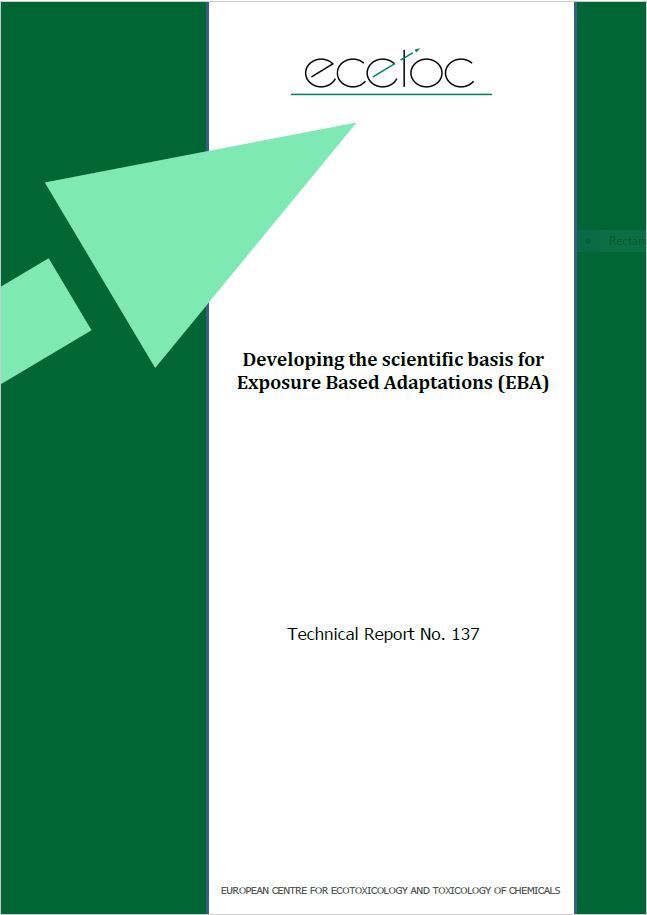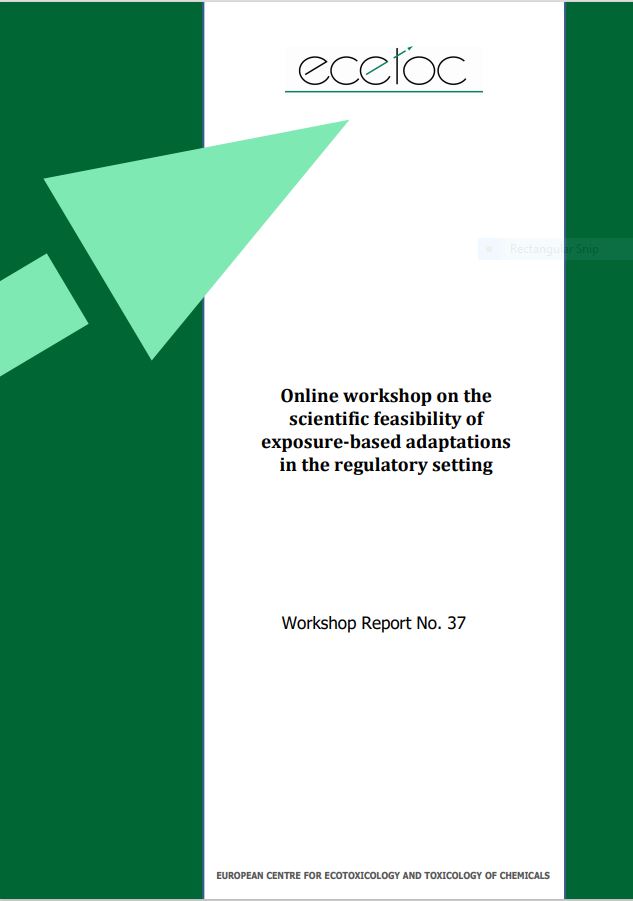Exposure-based adaptations Task Force
Background
Within the REACH legal text there are 2 ways to adapt the standard testing requirements; column 2 of annexes VII to X, and Annex XI. Annex XI contains 3 potential options – testing not possible or justified due to the properties of the substance or existing weight of evidence; use of read across; exposure based adaptations. Of these, the exposure based adaptations is the least utilised and successful (based on analysis of compliance check decisions).
Of all the possible adaptations, the use of exposure based adaptations is the only option that allows to waive all higher tier mammalian toxicity studies (Annex IX and X) (all other adaptations require some form of higher tier experimental data on the substance or an analogue). However the wording of annex XI, part 3 makes it almost impossible to successfully meet the criteria for using exposure based adaptations. This essentially removes the possibility to make use of it to reduce animal testing for potentially low exposure substances such as non-SCC intermediates, monomers, and other low exposure potential substances that are >100 or >1000t per annum. This is harsh contrast to environmental endpoints under REACH, and human health testing requirements e.g. for food contact materials and cosmetic ingredients, where testing is triggered based on exposure considerations.
In order to change the current situation regarding exposure based adaptations it is essential that the industry and other interested stakeholders first devise how it could be done, laying out what criteria should be met for exposure and toxicity data and how to document the case. While the activity is triggered by a lack of possibilities to avoid unnecessary animal testing under REACH, the framework to be developed or parts of it might also be leveraged to other regulations and regions.
Deliverables:
Develop a science-based decision and documentation framework for exposure-based adaptations of human health endpoints for chemicals. This can demonstrate proactively what would constitute science-based decision-making, valuing animal lives and efficient regulation:
- Identify what is already in place in terms of exposure based testing/adaptations (primary focus EU, other regions for comparison) in REACH and other regulation, e.g. food contact. Leverage the various ECETOC and CEFIC LRI projects looking at human and environmental exposure and exposure modelling tools to determine how best to build the exposure side of an argument for supporting exposure based waiving.
- Assess the current barriers to acceptance of the exposure-based adaptations approach for human health aspects of chemicals.
- Assessment of the exposure capabilities needed to support exposure based testing/adaptations
- Develop a consensus into how ‘fit-for-purpose’ health based guidance values (e.g. DNELs) can be derived for respective use types and exposure levels (what hazard data are crucial, what assessment factors would apply in which cases – e.g. is a 28d study sufficient for safety assessment).
- Develop a consensus on what is needed from the risk assessment – e.g. RCR <1 or RCR <<<1? (e.g. current REACH text states ‘exposures are well below the DNEL’).
- Discuss uncertainties and requirements for documentation
- Derive a framework with case examples for publication and possibly a workshop
Timing – 18 months
Out of scope
Classification and labelling: the protection goal for the discussions in this TF should be acceptable risks for intended uses, not for acute accidential exposures. With that, any desire to classify a substance and communicate hazards for accidential short-term exposures should not be a driver for exposure-based adaptation considerations.


